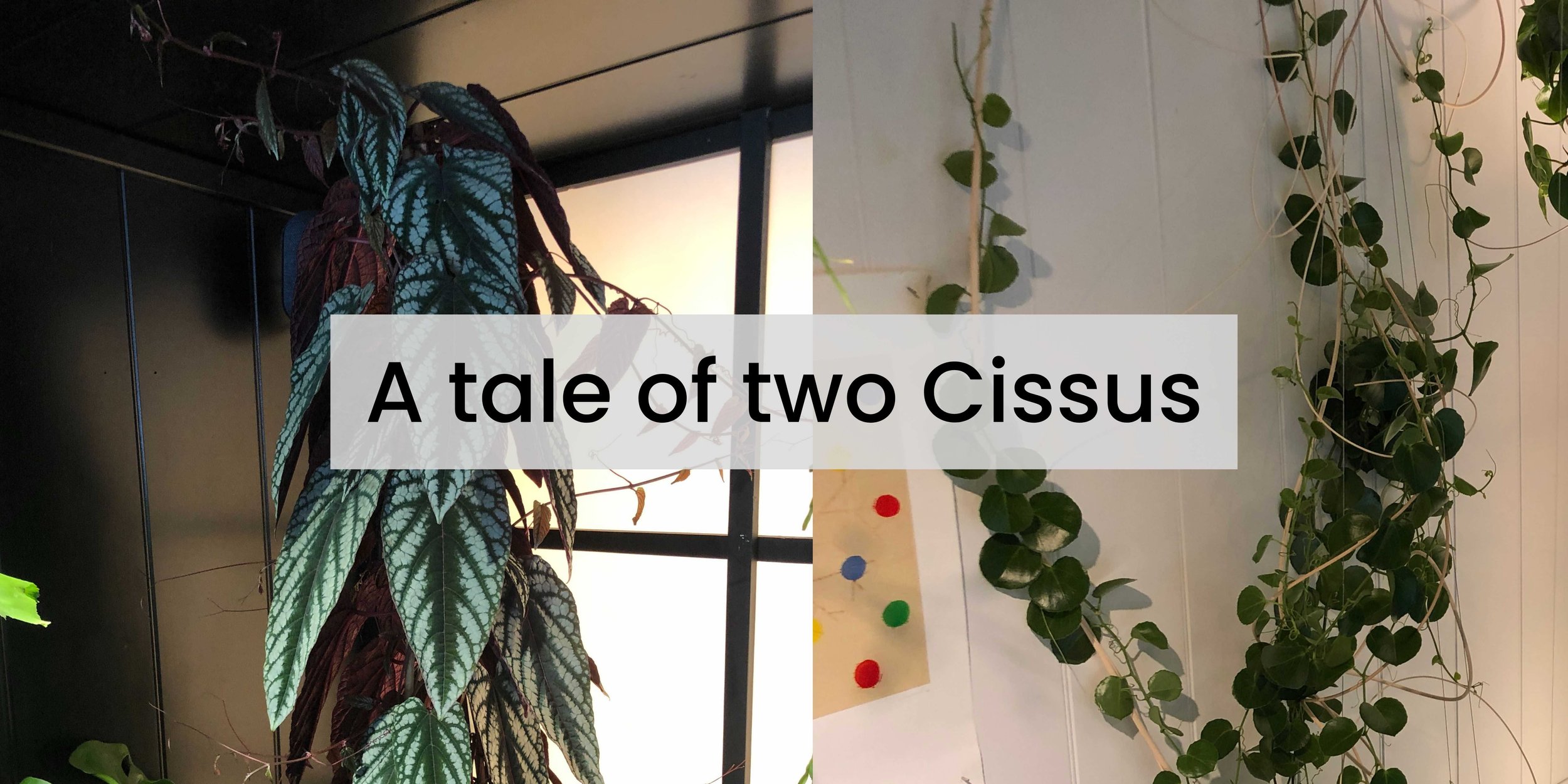A tale of two Cissus
I am recovering from a flurry of trips to London that brought levels of human interaction not seen since early March 2020: a trip to the Chelsea flower show, another work-related visit, and a (completely non work-related) trip to MCM Comicon.
At Comicon, I felt as if I was floating away on a sea of (mostly) missed cultural references. Chewie, the Daleks and Give That Wolf A Banana, I got; anime and computer game characters, not so much. Luckily I had my children on hand to explain who Wario is and why Inosuke Hashibira wears a pig's head.
This reminded me of the process trying to learn about houseplants: you will feel lost at times (often at first), you will gradually find your place and begin to figure out the difference between an aroid and a fern, but there will always be something new to learn. My advice is to get as many knowledgeable folks around you as you can (either in person, or through the medium of their book, social media or website), and don't be afraid to ask questions.
The first thing I like to do once I have a positive ID on a plant* is to look it up on Kew's Plants of the World Online to find out where it comes from and where it's become naturalised. This will help to narrow down what kind of climate and landscape it grows in, and therefore whether it will thrive in my home's growing conditions. Take two species from the same genus - Cissus dicolor and Cissus rotundifolia.
Both seem to be plants du jour in houseplant boutiques, although C. rotundifolia seems harder to get hold of: both popped up at the Houseplant Studios at Chelsea** this year too. The Begonia rex vine, as C. discolor is known (it is not a Begonia) comes from South and Southeast Asia, so it likes a fair amount of humidity and warmth. Meanwhile C. rotundifolia grows in dry woodlands on the eastern side of Africa, and is much more tolerant of drying out at the roots. One of the other species found growing in the same territory is the legendarily tolerant Zamioculcas zamiifolia or ZZ plant. So, I know from experience that this plant is far more likely to thrive in my particular home than its relative, C. discolor.
This is the kind of research that can save you a lot of time and money. Yes, impulse buys do still happen, but being aware of a plant's needs before you buy is the kind of knowledge that sets you on the path to true planty enlightenment.
PS I came up with the title of this piece after I wrote it, even though I studied Charles Dickens at University. Improbable but true.
*I discuss how to ID mystery houseplants in this episode of On The Ledge.
**You can listen to all my interviews at Chelsea's Houseplant Studios here.
This blogpost was taken from The Plant Ledger, my email newsletter about the houseplant scene. Subscribe here and get my free in-depth guide to fungus gnats.
